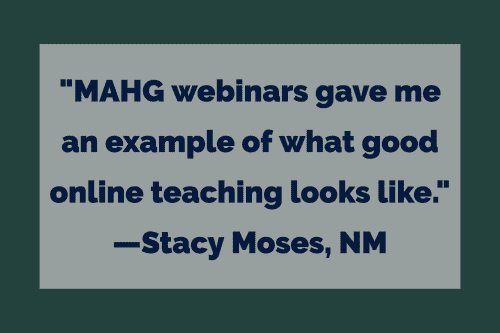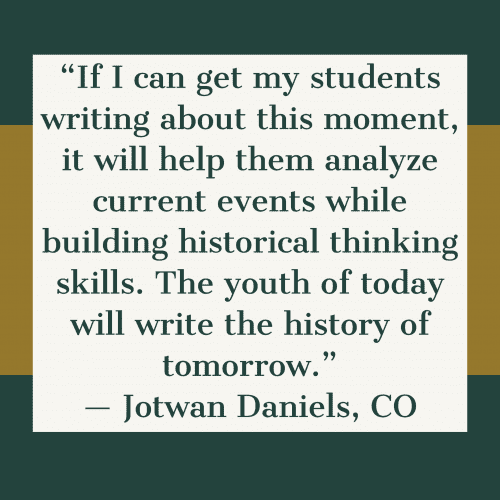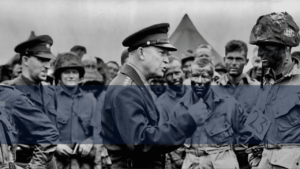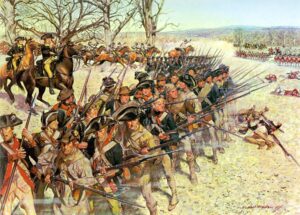
Teaching Online While Supporting Distant Students
How are teachers we know around the country dealing with campus closures and the move to distanced learning? They are working harder than ever to learn a new approach, gamely adapting to the challenge. Yet without daily personal contact with students, they worry about losing them to apathy, confusion, or family financial pressures.
A Sudden, Unexpected Transition
Most teachers we talked to say that orders to close school campuses and shelter in place came too quickly for them to prepare students as they would have liked. Many were on spring break when their school campuses shut down. Many came to school on a morning, uneasily aware that things could soon change, then read the emailed order to close campus after students were dismissed for the day.
Districts and schools scrambled to organize distanced learning plans, many asking teachers to assemble paper “packets” of readings and assignments to be picked up by parents or delivered to them at school bus stops. Most of this schoolwork provides enrichment or review. Yet many teachers at the middle and high school level hope to push forward in the yearly curriculum. High school teachers in particular want to prepare students for AP exams and complete dual enrichment courses, both of which can confer college credit. Although the College Board moved quickly to adopt simplified, online 45-minute AP tests, teachers want their students to be ready for any question posed.
Online Learning in MAHG Eases Transition to Online Teaching
 School officials, prioritizing high school instruction, have asked many teachers to quickly shift to online instruction, using free platforms like Zoom they’d never before tried. Teachers who had taken online courses in the Master of Arts in American History and Government program were now glad of that experience.
School officials, prioritizing high school instruction, have asked many teachers to quickly shift to online instruction, using free platforms like Zoom they’d never before tried. Teachers who had taken online courses in the Master of Arts in American History and Government program were now glad of that experience.
“Those MAHG webinars gave me an example of what good online teaching looks like,” said Stacy Moses, adding that without them, she would have felt awkward engaging students in discussion through a computer screen. Shreeta Ashley commented that her online MAHG classes made her better able to explain the mechanical novelties of online learning tools to her students. “I realize I have to give very precise instructions,” she said.
Providing Equal Access to Online Instruction
Before online learning can begin, students need home computing devices. Some fortunate teachers work in schools and districts using the “one-to-one” model (equipping every student with a portable computer that goes home with them at night) and using an online Learning Management System (LMS) to post assignments and grades. In other cases, schools loaned classroom computers to students without them.
Internet access remains a problem for lower-income students. At the Creative Learning Academy in Pensacola, FL, where Amy Parker teaches history to sixth through eighth graders, a parent who owns a wireless company gave free WIFI access to students attending the school on tuition vouchers and scholarships. Nancie Lindblom, of Mountain View High School in Mesa, AZ, advised a student to “drive to the school, sit in the parking lot, and connect there, because the internet is still on at school.” Mountain View’s principal is working alone inside, unlocking the door for teachers return to campus to retrieve needed books or papers.
But in a ski resort community in Colorado, Jotwan Daniels worried about students who normally get internet access through community centers and libraries. Without ensuring internet access, “you’re giving a kid from poverty only a glorified word processor,” he said. Daniels worries further that these students, having taken “essential” jobs in supermarkets now frantically trying to keep shelves stocked, have no time to drive to the school parking lot. “They’re working all the hours they can” to replace incomes lost by parents laid off from the hospitality industry.
Using Cellphones as an Educational Tool
Somehow, teenagers from all economic levels acquire cellphones. “We should be using cellphone technology better,” Daniels said. Earlier in the year, he had advised students to download to their phones the apps for Google Drive and Schoology, the LMS used at Summit High School. “Right there in your pocket, you have everything you need for school!” he’d told them. Now Daniels wishes he had established a “Mr. Daniels’ Twitter” account and accustomed students to reminders about assignments he’d posted at Schoology, the LMS used at Summit High School.
Other teachers have discovered an app, Remind, specifically designed for this. Kim Grosenbacher isn’t sure whether premonition or Providence made her put her government students through a time-consuming ritual on the first day of the semester. She announced, “To begin our government class, we’re going to learn about bureaucracy, which demands that you wait patiently in line.” One by one, students stood at her desk as she checked that they had enrolled in Google Classroom (the LMS used at Boerne Champion High School), Remind, and AP Classroom (an app introduced by the College Board just this year). “I’m grateful I did that, because now I can contact them by phone if they are not attending our Zoom sessions or turning in assignments.”
She uses another app, Google Voice, to phone students through a neutral number that links to her personal phone number, protecting her privacy. She’s learned some students cannot attend online classes, because they’ve taken a grocery job or because siblings at home also need the computer. Grosenbacher, like Lindblom, records the sessions and emails them to those who can’t attend.
Digital Creativity
Devising the online lesson requires a new kind of creativity. Teachers who had already embraced digital tools permitting mostly “paperless” classrooms had most of the resources they needed at hand. Many teachers involved in TAH programs, having long ago abandoned textbooks for lessons using primary sources that they write themselves, already had digitized lesson plans that could be adapted to the current situation.
Melanie Stuthard of Revere Middle School in Akron, Ohio, leads eighth graders each year in building their own “collaborative digital textbooks” for the American History I (1607-1877) course she teaches. “The students and I look through primary sources and put the story of history together. I use Google slides to create a skeletal structure for the content they create. Each student completes their own copy of the textbook by filling in the blank portions of the slides.” Each finished ‘textbook’ looks different, recording the student’s discoveries in his own idiom. Students are proud of what they create. Many carry their textbooks to high school, reviewing them prior to taking their AP US History exams.
For example, after reading a key passage of the Monroe Doctrine, students are prompted to represent the doctrine visually. They draw or download online maps of the Western Hemisphere and Europe, adding marks to show Monroe’s warnings against foreign intervention.
Teaching Primary Document Analysis in the Online Classroom
A free program called “Actively Learn” helps students record their interpretations of primary documents. Very useful for the collaborative textbook, Stuthard finds it so adaptable to distance learning that she recorded a demonstration video for other teachers.
The program provides a framework to which she downloads document excerpts from the Teaching American History online library, adding various aids to analysis. She can pose a question at any point in the passage, requiring students to think about an author’s assertion and explain or respond to it before reading further. She can add images, explanatory links to explain context, and links to videos or recordings. The program has a built-in dictionary, so that students can find definitions for words they don’t understand, and an ESL tool that voices the pronunciations of unfamiliar words. After students have worked their way through the entire document excerpt, they can review their work and correct their answers. Teachers may also monitor students as they work, even using a comment feature to nudge the student to rethink an answer.
Lindblom digitized all her class materials several years ago. She runs tightly choreographed APUSH classes, expecting students to read primary documents at home before analyzing them in class. Her students pivot quickly from large group discussion into break-out groups that tackle difficult concepts, turning back to the large group to report their conclusions. “Zoom allows me to use break-out groups,” she said. “After our first online class meetings, I asked students for feedback, and many thanked me for keeping the break-out sessions in the online meetings. They need them to learn, they said.”
Using Online Media
Teachers are compiling visual resources to enhance online classes. Parker, now teaching at a private middle school that allowed her to design her own curriculum, has planned “virtual field trips” for students, using online exhibits provided by national parks and museums. Grosenbacher appears on Zoom in front of background photos of Washington, DC architecture. Ashley, conscious that many of her eighth-grade students at Carpenter Middle School in Plano, Texas need guidance in critical reading, designed an online lesson involving “lightweight analysis” of visually intriguing primary sources: historical cartoons.
Ashley’s interactive slides first present the reform movements that swept 19th century America as a constellation of concerns: abolition, transcendentalism, temperance, etc. Clicking on a single topic opens up further explanations and illustrations. Students meet leaders of the movements, watch videos about them, and then are asked to draw inferences from the cartoons. For example, after studying a cartoon showing women dressed as medieval crusader knights and swinging battle-axes through kegs of rum, students are asked to identify the group most involved in the temperance movement (women).
An Historical Moment—Not a Permanent Shift to Distance Learning
Teachers are working hard to adapt to the new reality. Those who’ve conditioned students since September to read and analyze primary documents—as many teachers in Teaching American History’s network do—feel confident that students will continue learning while staying at home. Yet all agree that no online platform replicates the face-to-face connection between teacher and student. “My gift as a teacher is building relationships,” says Amy Parker. “I can tell if a student is having a bad day the moment they walk in the room.” It is much harder to read the body language of a face on a screen. It’s hard to help a learner who needs to talk through each new concept if, due to the time limits imposed by online platforms, you meet fifty students at once in a 30-minute Zoom session.
 One way to continue engaging distant students in social studies is to remind them of the historic significance of the moment. Grosenbacher encourages students to photograph the eerily empty streets or the lines of shoppers waiting anxiously for grocery stores to open. Moses, who always asks students to keep two journals—one personal, another academic—can imagine the personal journal becoming a primary document of the future. Daniels agrees. “If I can get my students writing about this moment, it will help them analyze current events while building historical thinking skills. The youth of today will write the history of tomorrow.” By journaling their own reflections, Daniels said, students can lay the groundwork for that history, at the same time asserting personal control over one aspect of an uncertain future.
One way to continue engaging distant students in social studies is to remind them of the historic significance of the moment. Grosenbacher encourages students to photograph the eerily empty streets or the lines of shoppers waiting anxiously for grocery stores to open. Moses, who always asks students to keep two journals—one personal, another academic—can imagine the personal journal becoming a primary document of the future. Daniels agrees. “If I can get my students writing about this moment, it will help them analyze current events while building historical thinking skills. The youth of today will write the history of tomorrow.” By journaling their own reflections, Daniels said, students can lay the groundwork for that history, at the same time asserting personal control over one aspect of an uncertain future.



